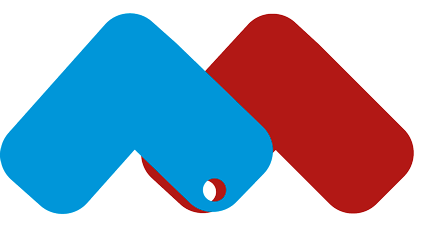Susan Colantuono’s insights on how women can receive the right mentoring and guidance to advance into higher leadership positions are profound.
In case you missed her TedTalk – be sure to visit it for great insights about why women – to a lesser degree than men – advance into higher leadership positions.
The Career Advice you Probably didn’t get | Susan Colantuono
In this interview, I ask Susan Colantuono to elaborate on questions about mentorship, business acumen, and how to facilitate women’s path into higher leadership positions. We want to learn – how is it done in practice.
Understanding the Missing Piece
Vibeke Vad Baunsgaard: In your TED Talk, you mentioned the “missing piece” in career advice for women. Could you elaborate on what this missing piece is and why it’s crucial for women aspiring to leadership roles?
Susan Colantuono: What I dubbed the Missing 33% of the career success equation for women is Business Savvy. It includes business, financial, and strategic acumen. Business Savvy is 1/3rd of what it takes to be an effective leader: “Leadership is using the greatness in you to achieve and sustain extraordinary outcomes by engaging the greatness in others.” (My definition – universally embraced by every executive team I’ve worked with.)
the Missing 33% of the career success equation for women is Business Savvy
I describe Business Savvy as “missing” not because women can’t or don’t have it (they can and many do) but because it’s missing from the common advice given to women, from the informal advice provided through corporate performance reviews, leadership assessments, and from coaching engagements.
It was missing when I discovered it in 2000 and again when I updated my research in 2023. Nearly every day I hear from a woman who has watched my TED Talk telling me how eye-opening it was. Or how she knew something was holding her back and now she understands what that is. Just recently a woman in my Business Savvy YOU! program said,” “Going through this first part made me stop in my tracks. I feel as though I’ve just woken up.”
The Importance of Mentorship
Vibeke Vad Baunsgaard: Mentorship plays a significant role in career development. How can women identify and approach mentors who can guide advancement in leadership positions?
Susan Colantuono: Mentorship has played a role in people’s leadership success for thousands of years. Probably even before Mentor was asked to keep an eye on the son of Odysseus as he left for the Trojan War.
I tell a story in my TED Talk that illustrates that most men (and not surprisingly women, too) think women need mentoring on confidence and most men need mentoring on the business.
If a mentor reaches out to support your career success or if you are seeking a mentor, be sure that you engage them on how to develop and demonstrate Business Savvy (business, financial, and strategic acumen).
Addressing Skill Gaps
Vibeke Vad Baunsgaard: You emphasized the importance of mastering business, strategic, and financial acumen. How can organizations effectively address skill gaps in these areas for aspiring female leaders?
Susan Colantuono: That’s simple. Question everything they’ve ever believed about leadership.
Their mandate isn’t to develop leaders per se. Their mandate is to develop business leaders. Anything less is nonperformance. Developing business leaders means strengthening their business, financial, and strategic acumen.
Creating Supportive Environments
Vibeke Vad Baunsgaard: Building a supportive environment is essential for women to thrive in leadership roles. What strategies can organizations implement to create inclusive cultures that foster the development and advancement of women in leadership?
Susan Colantuono: Seriously, get rid of bad managers – managers whose mindsets about women and men, careers and leadership create barriers to women’s advancement.
Overcoming Career Barriers to Top Leadership Positions
Vibeke Vad Baunsgaard: Women often face unique challenges and barriers in their career progression. What advice do you have for women navigating these challenges and overcoming barriers to advancement into higher leadership positions?
Susan Colantuono: Assuming that we are competent and sufficiently Business Savvy, my answers here relate to the mindsets I mentioned before. Most of the barriers to advancement that we face will be created by the mindsets of managers. Here’s what I mean. We might be denied an opportunity because the hiring manager:
- Assumes “she won’t want that job because she’s a mother and it requires travel.” This is the well-researched Motherhood Penalty and comes about because the hiring manager believes that mothers aren’t ambitious or willing to travel.
- Gives our male colleague more money because he’s a father. The Fatherhood Reward rests in the belief that men are heads of households and need to provide.
- Hears from a colleague that “she’s good with people but can she be effective.” A bizarre Leadership Paradigm that equates command and control actions as the proper manifestation of leadership.
I could go on and on.
_____
EXPLORE ALSO: Women in Boardrooms: After Ten Years of Equality Drives, it’s Time for Quotas
_____
My advice about navigating these challenges is
- Keep the monkey off your shoulders. Decisions that create career barriers are being made by “them.” You aren’t responsible, so don’t internalize feelings of failure, incompetence, or unworthiness.
- Do a reality check. That being said, you might have skill or experience gaps to close. Survey your qualifications dispassionately and take action to fill gaps.
- Seek opportunity elsewhere. If your objective analysis says you measure up – and especially if no or few women are moving – look for opportunities in other parts of the business or outside.
- Educate on the barriers. This has two meanings. It’s useful to be personally aware of the barriers that women face and the mindsets behind them. When you are, you’re more able to – educationally – explain when one of those mindsets might be creating barriers for you and/or why it shouldn’t.
- Tailoring Development Programs: How can organizations design and implement leadership development programs that specifically target the needs of aspiring female leaders, particularly in terms of developing Business Savvy?
As it relates to offering leadership content on Business Savvy, here’s what NOT to do. Don’t offer programs as usual even if the topics are business, financial, and strategic acumen. Do NOT use AI to design a program on Business Savvy. My research finds that most existing concepts and programs about Business Savvy are a hodge podge of expertise thrown together from the academic or accounting view outward – instead of from the shoes of the CEO and Board.
What women need is content that helps us find the Venn diagram overlap of business, financial, and strategic acumen, and how to get there from the perspective of the top of the organization. Humble brag – that’s exactly what my content does.
The second thing to NOT do is to think leadership programs for women – even those teaching Business Savvy – will solve the advancement problem. They will not – see 4 & 5 above. Unless the organization recognizes that managers are creating the problem and addresses that cause, the problem will persist.
The third thing to NOT do is assume your culture is a meritocracy. When you look for them you will find systemic issues with policies, practices, and norms that make it more difficult for women to advance. Tackle them as well.
The Role of Executive Sponsorship
Vibeke Vad Baunsgaard: Executive sponsorship can significantly impact a woman’s career trajectory. How can women secure executive sponsorship and leverage it to advance their careers?
Susan Colantuono: You’re spot on with this, Vibeke. Sponsorship at any level will significantly impact a woman’s career trajectory. That’s because sponsorship means that someone, most often at a higher level, is advocating for you as a candidate for opportunity. This is why sponsorship can’t be assigned, it must be earned.
Here’s what managers and executives have told me over and over, “I won’t spend social capital on someone I don’t see as a partner in the business.” This means that you have to have and demonstrate business savvy to earn sponsorship. Because it’s business savvy that gets you seen as a partner in the business. This is ESPECIALLY true the higher you go.
Personal Growth and Development
Vibeke Vad Baunsgaard: What advice do you have for women who are seeking to continuously grow and develop their leadership capabilities, both personally and professionally?
Susan Colantuono: Do an honest assessment of yourself in the context of my 3-part leadership definition.
- Am I self-aware and do I demonstrate desirable personal qualities: No, Good enough, Yes
- Do I have and demonstrate business, financial, and strategic acumen (as it would be expected by my manager and his/her manager): No, Good enough, Yes
- Do I effectively deploy my interpersonal and team skills to move the organization forward: No, Good enough, Yes
A word about Good Enough. It’s a waste to devote time to getting better at things you’re already “good enough” at, especially if your answer is “No” to any of these. And I have to say that the vast majority of women I’ve met all around the world, at all levels and from nearly every industry say “No” to both having and demonstrating Business Savvy.
Once you’ve identified the gap(s) – take focused action.
Breaking Through the Glass Ceiling
Vibeke Vad Baunsgaard: Breaking through the glass ceiling remains a challenge for many women. What strategies or tactics have you seen be effective in helping women shatter these barriers and reach the highest levels of leadership?
Susan Colantuono: I’ve gotten increasingly cranky about the concept of “breaking through the glass ceiling.” Here’s why.
- Women don’t create the glass ceiling. It’s created by the managers, executives, and Board whose actions and hiring decisions create barriers for women. Therefore, women don’t shatter it. The organization’s culture has shifted and/or the actions of individual managers have shifted.
- The metaphor is lacking. Not even all men can get to the top. What’s being described is a semipermeable membrane that filters out certain personas and allows others to pass through. In this sense, any woman who has made it to unprecedented levels has either fit the personal and/or had the size of the filter changed (again shifts in culture and management actions). Certainly, she warranted the opening, but because she didn’t create the barrier, she also didn’t shatter it.
- Even if you accept the idea of a glass ceiling, it’s often not shattered. Once a woman gets beyond it, there’s no guarantee that others will follow, which would be the logical outcome if it were shattered.
Now, I know I haven’t answered your question. Here are examples from my research about the shared experiences of women who’ve made it to the top:
- During their careers, they have had line/operations experience combined with staff roles.
- They have strong internal and external networks and they have shifted toward more external relationships as they progress.
- By the way, their work also shifts from more operational to more strategic as they progress.
- They have applied business savvy to deliver outcomes – launching new businesses, turning around failed businesses, and leveraging acquisitions.
- They have transitioned from membership to leadership roles in professional associations and on to industry associations.
- They have let go of comfortable skills and activities to take on the next challenge.
- They have Board experiences to help them get in the shoes of the executive team.
Measuring Success Rates of Advancing Women into Leadership
Vibeke Vad Baunsgaard: How can organizations measure the effectiveness of their efforts to support the advancement of women into leadership roles? What key metrics or indicators should they be tracking?
Susan Colantuono: I suggest that companies track the following 4 key metrics and other key data as they work to advance women into leadership roles.
- Rate of retention of women and the related costs of recruitment.
- Rate of advancement of women and the related costs of recruitment
- Time to hire (having a pool of highly qualified women candidates because the company has the reputation of being a great place for women to work) and the related costs of recruitment.
- Internal referrals of women candidates converting to hires (because the company has that good reputation) and the related costs of recruitment
- Employee satisfaction scores women vs all employees vs men presented by level and by the manager (to pinpoint bad actors)
- At what “rungs” women are falling off the ladder when compared to the trajectories of men (to target corrective actions)
- Pay equity audits to ensure the company is paying women equally and not incenting them to leave (and related costs of attrition)
And, by the way, don’t trust exit interviews. Women often use “family reasons” as code for “this culture is toxic.”
Advice for Aspiring Female Leaders
Finally, what advice do you have for aspiring female leaders who are looking to advance into higher leadership positions and make a meaningful impact in their organizations and beyond?
Susan Colantuono: By now, you know this is coming, Vibeke. My advice is to Be Business Savvy.
You’re never too early in your career to start building business, financial, and strategic acumen, but if you’re ambitious it could be too late!
___
Vibeke Vad Baunsgaard: Thank you, Susan, for this inspiring and insightful conversation about women advancing into leadership and business acumen.
Susan Colantuono: It’s been my pleasure, Vibeke. Thank you for your brilliant questions and for the opportunity to bring important insights to your audience.
_____
About Susan Colantuono
Susan Colantuono is a pioneering author, researcher, and consultant on women’s advancement through enhanced Business Savvy. Her TED Talk is one of the most-watched talks on the subject.
You can find more about Susan Calantuono on LinkedIn and at Be Business Savvy.








